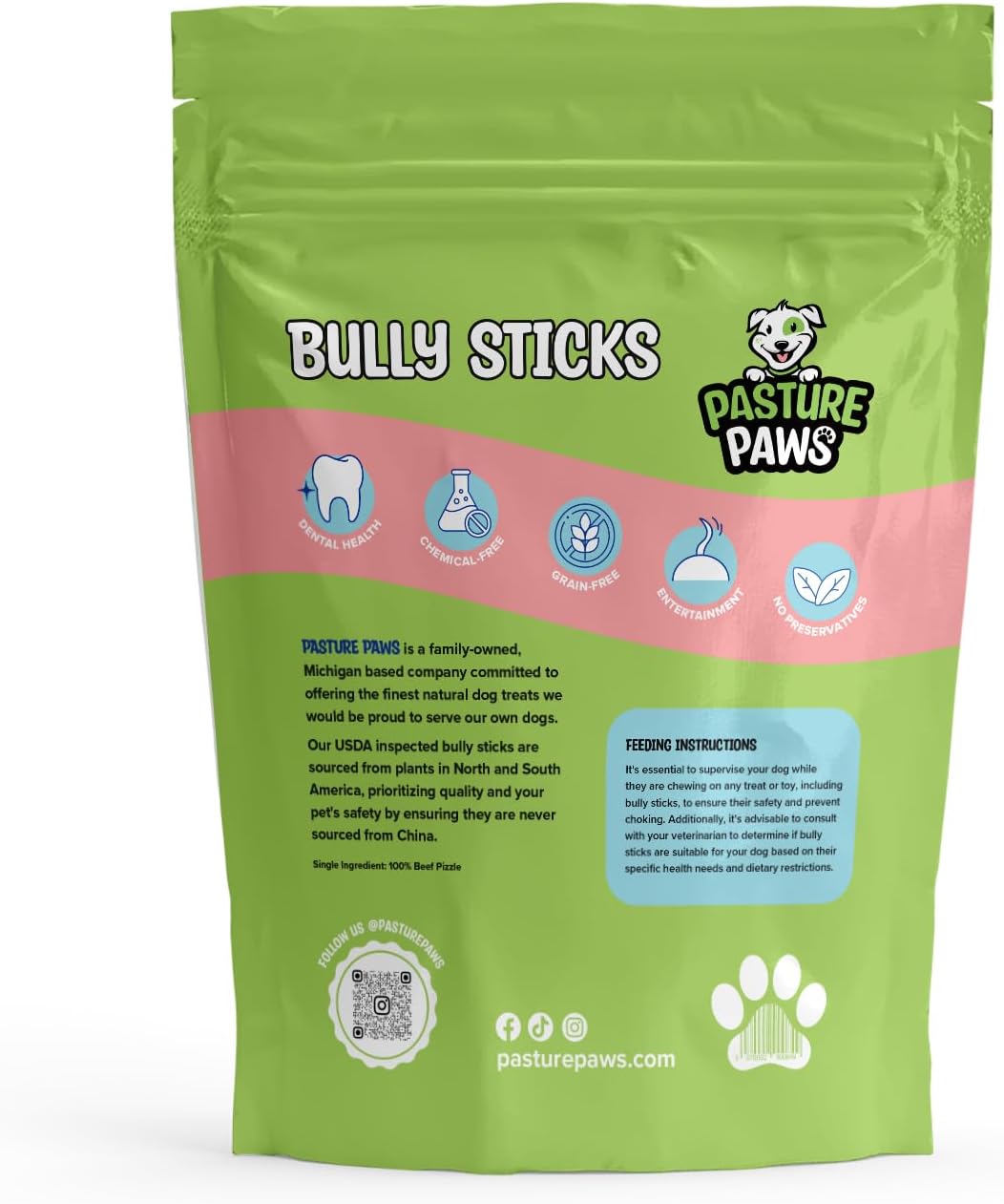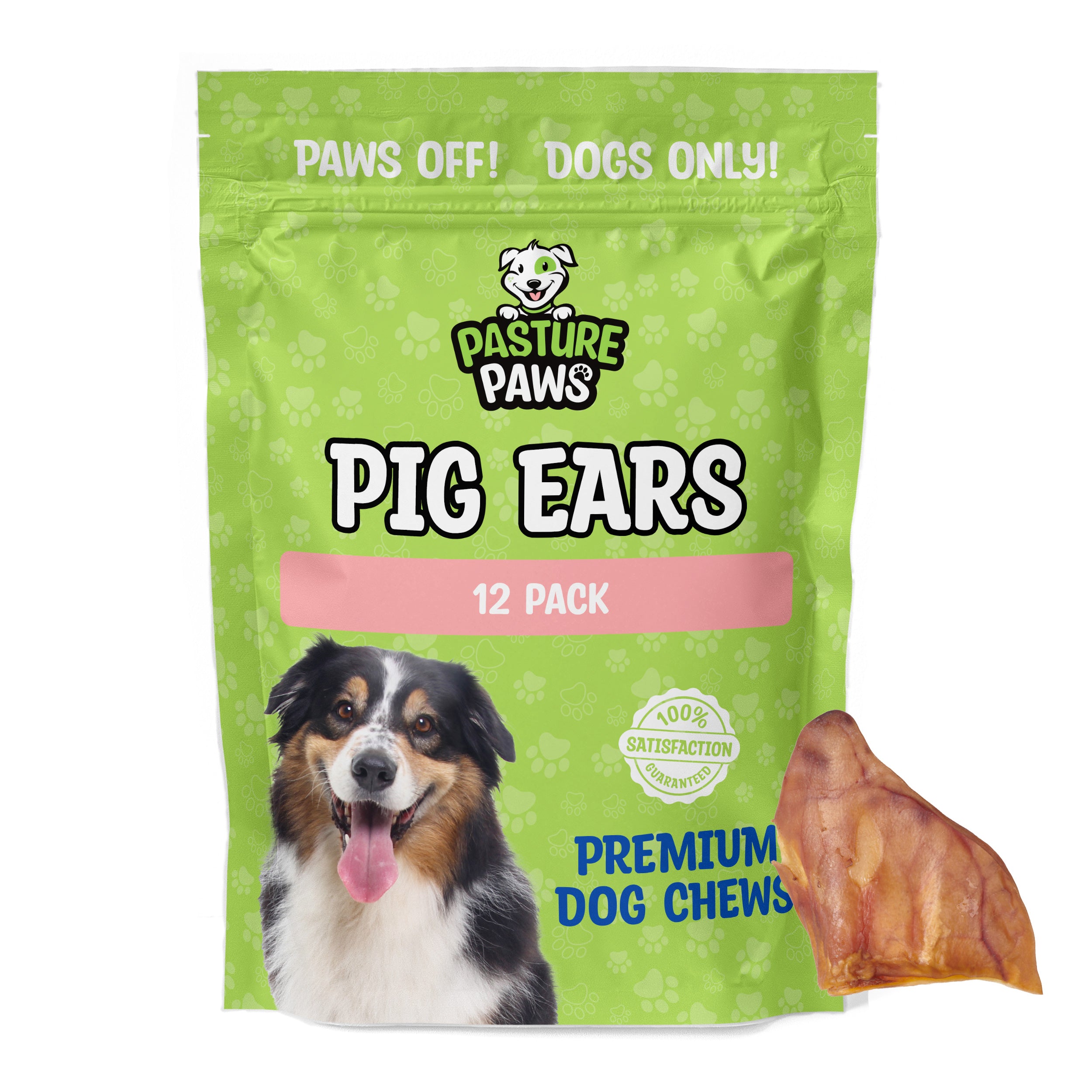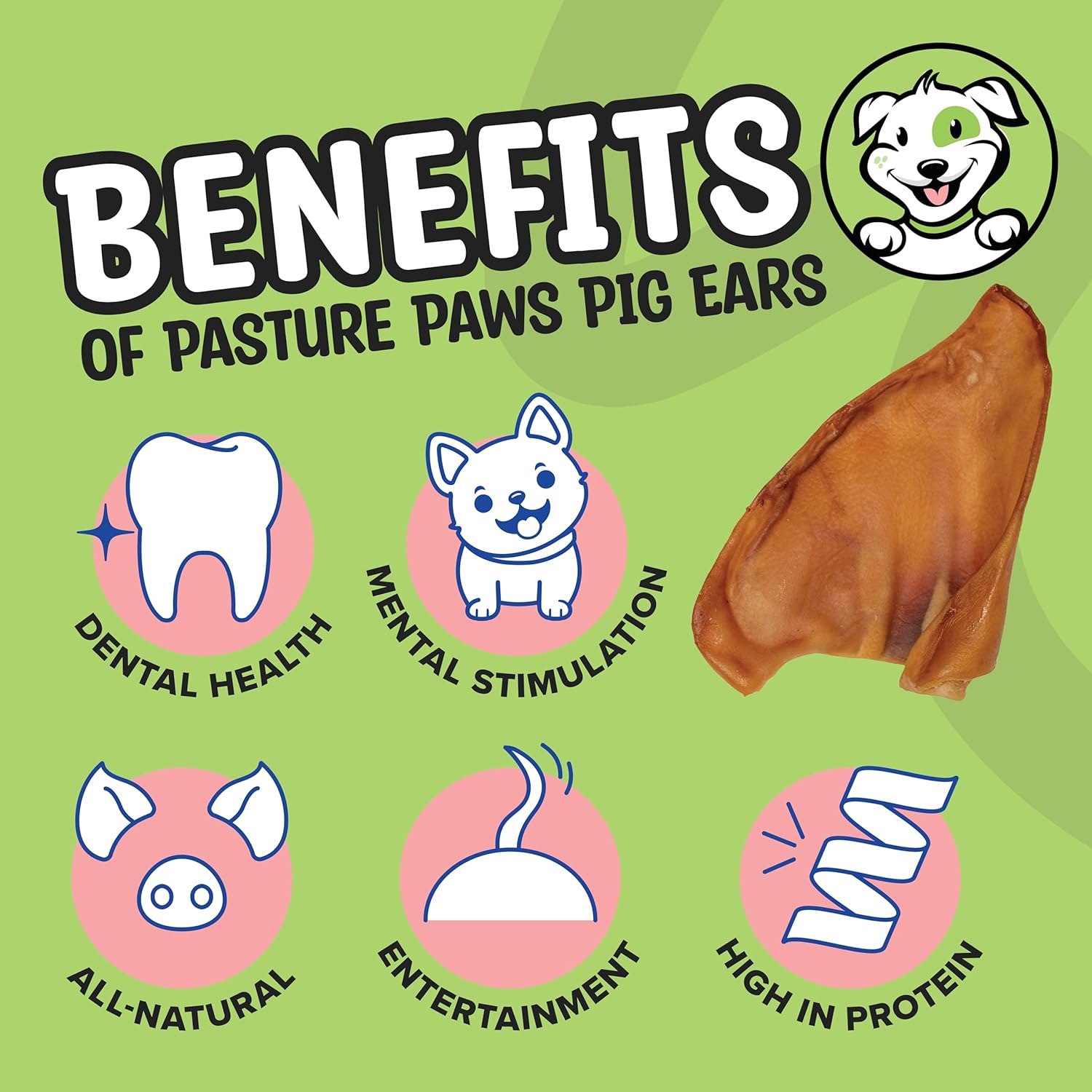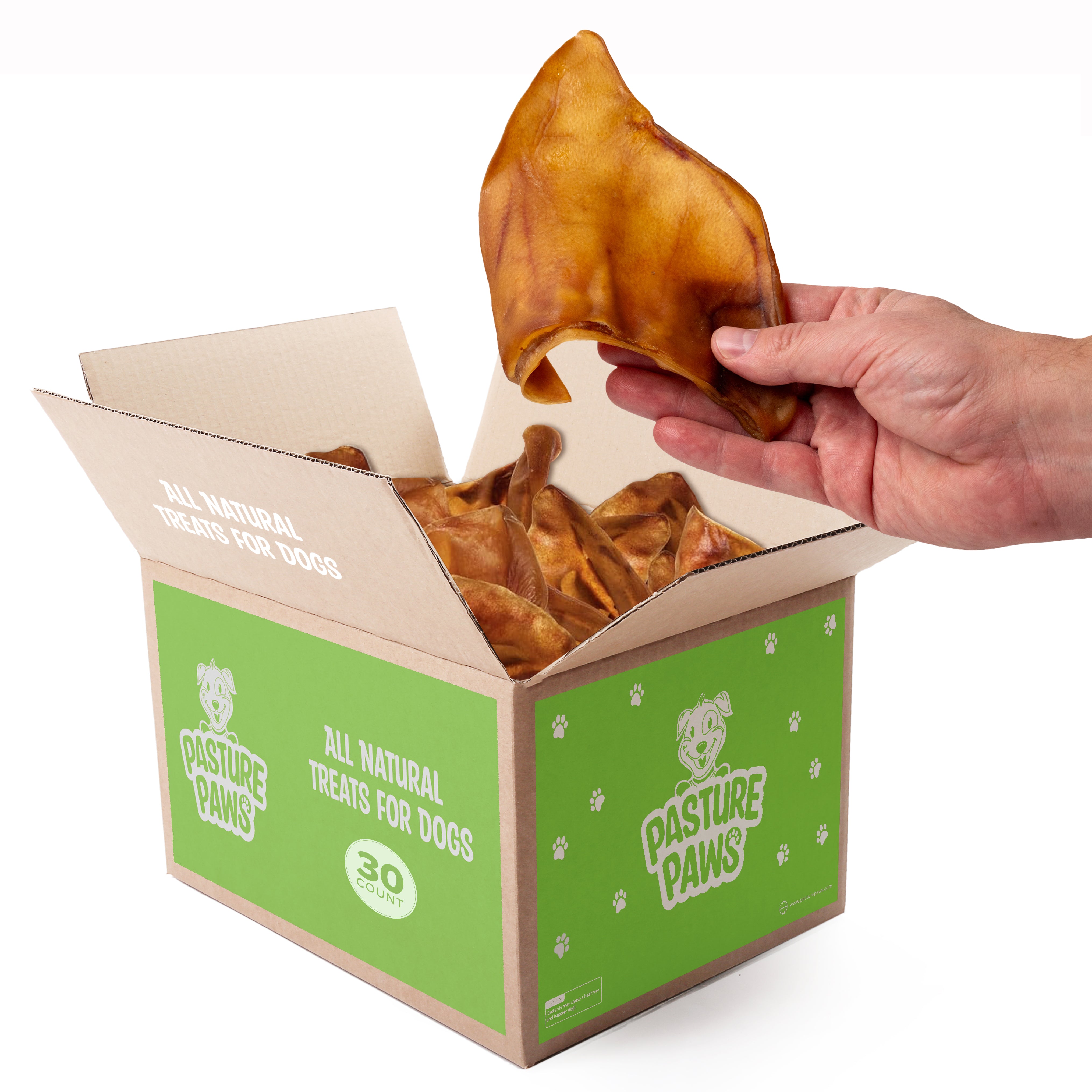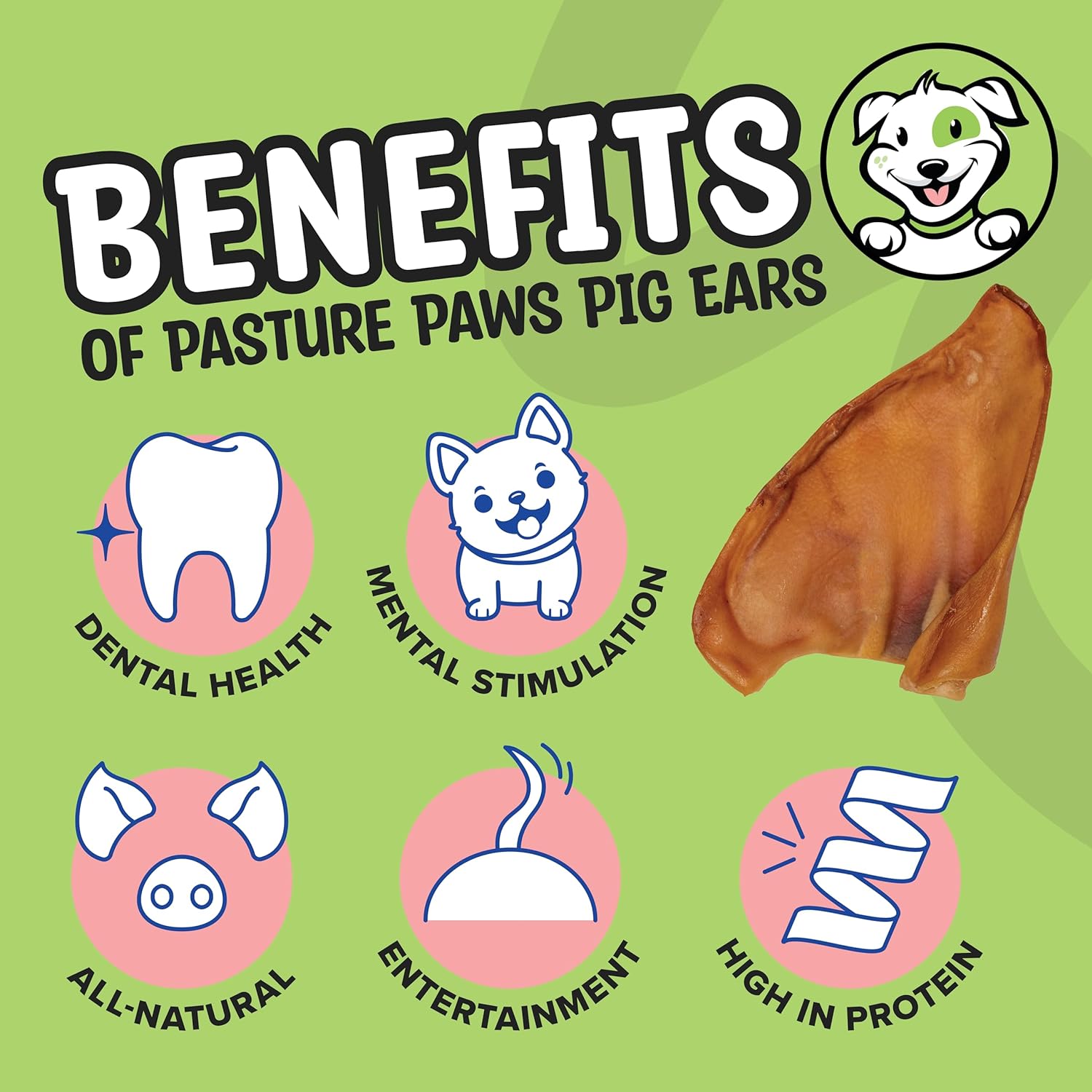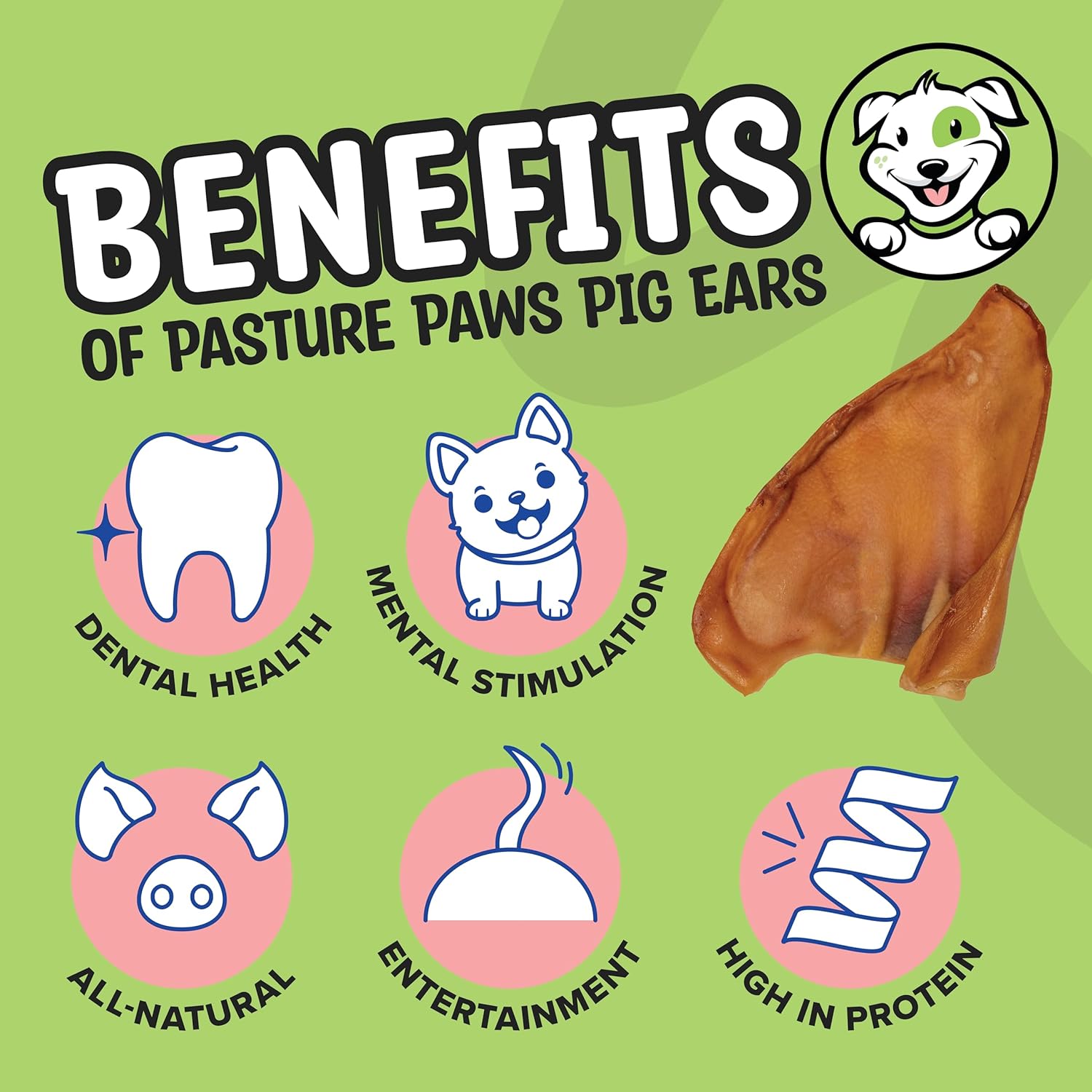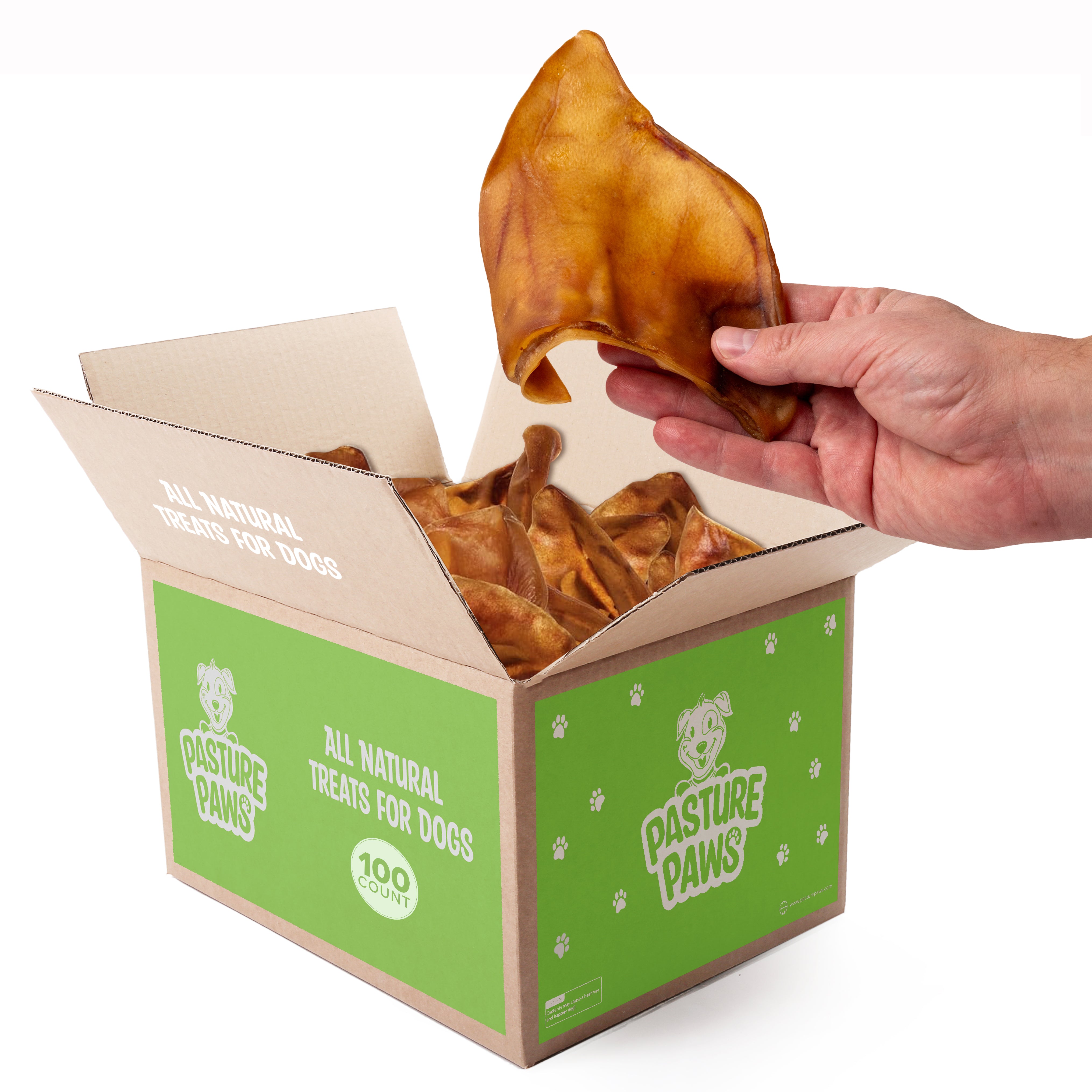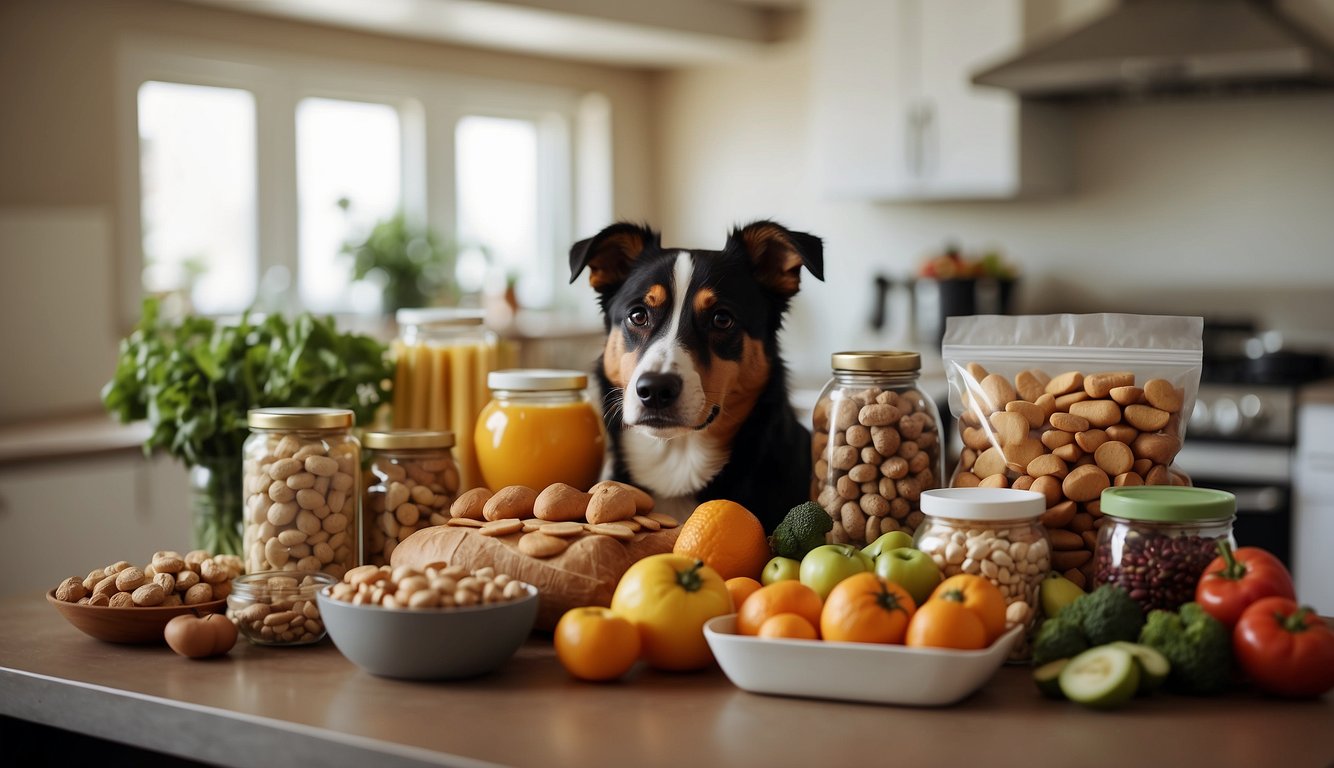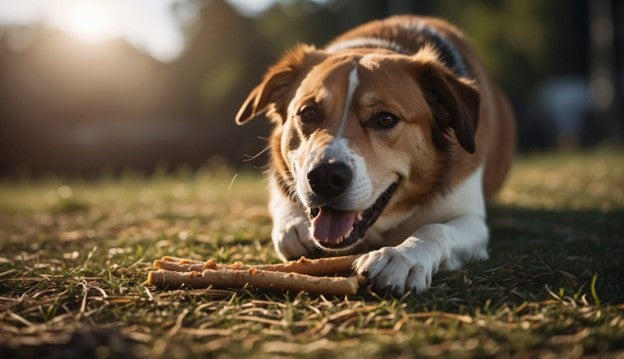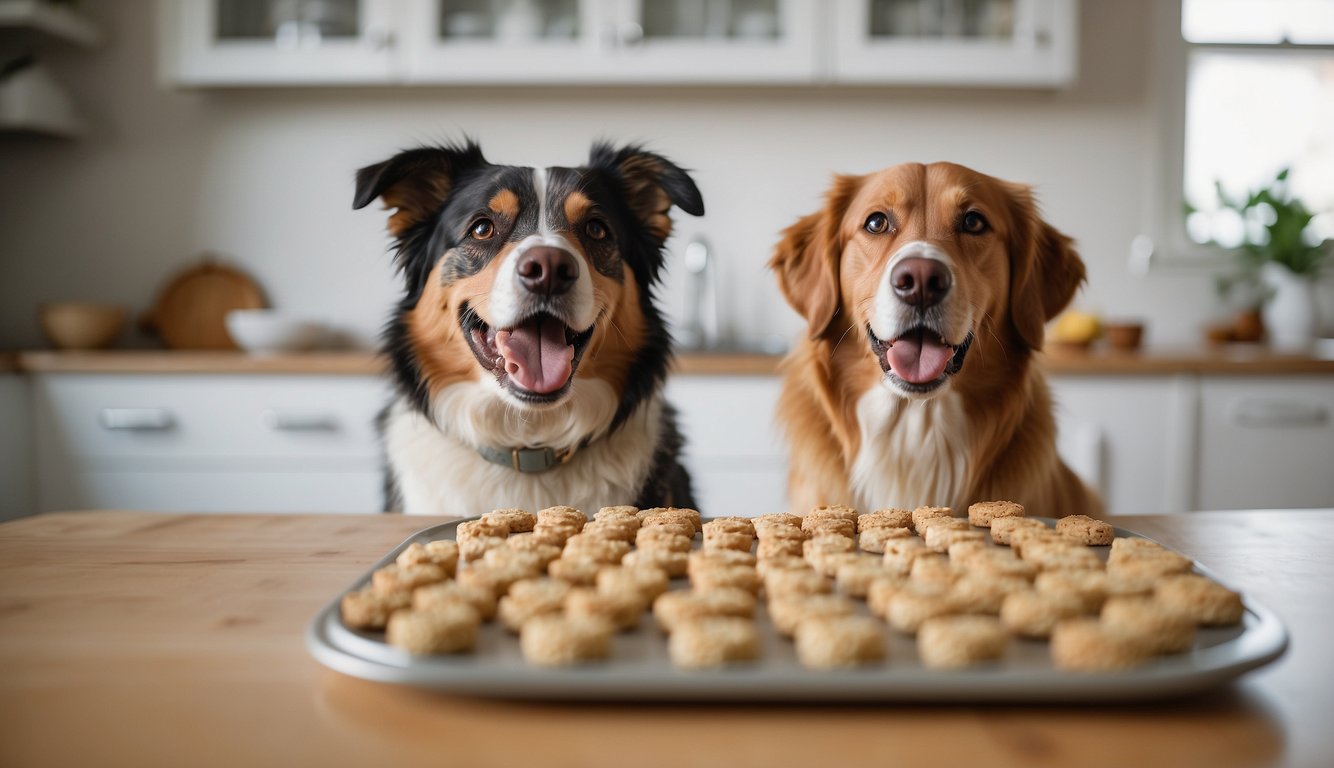For effective dog training, it's crucial to choose good training treats for dogs that are tasty, small, and healthy. These treats should grab your dog's attention and be easy to give quickly during training sessions. As key tools in positive reinforcement training, good training treats for dogs reward good behavior and help your dog learn new commands.
The best training treats are those your dog loves and will work hard to earn, like Pig Ears - 50 count. Use these treats to mark the exact moment your dog does something right, helping them connect the action to the reward. Vary the treats you use, including Pi Ears, to keep training fun and exciting for your dog. Remember to adjust your dog's regular meals when using lots of treats during training to prevent overfeeding.
Understanding Training Treats for Dogs
Small, bite-sized treats work best for training. They let you reward your dog quickly without interrupting the training flow.
For most dogs, treats about the size of a pea are ideal.
Soft, chewy treats are often preferred. They're easy for dogs to eat fast and get back to training. Some good options include:
- Small pieces of cooked chicken or turkey
- Tiny cubes of cheese
- Soft commercial training treats
For puppies or dogs with sensitive teeth, look for treats that are easy to chew and swallow.
Nutritional Value and Ingredients
Choose treats that are healthy and fit your dog's dietary needs.
Look for treats made with high-quality ingredients and avoid artificial preservatives or colors.
Some nutritious treat options include:
- Freeze-dried meat treats
- Small pieces of fruits or veggies (check which are safe for dogs)
- Low-fat, low-calorie commercial treats
For dogs with food sensitivities, try grain-free or single-ingredient treats.
Always check the calorie content and adjust your dog's daily food intake to prevent weight gain.
Treats play a key role in dog training. They motivate dogs to learn and reward good behavior.
Choosing the right treats can make training more effective and enjoyable for both you and your dog.
The Role of Treats in Positive Reinforcement
Treats are a powerful tool in positive reinforcement training. They help dogs link good actions with rewards. This makes them more likely to repeat those behaviors.
Use treats to mark the exact moment your dog does something right. Give the treat right away so your dog knows what they're being rewarded for.
Vary the treats you use to keep your dog interested. Some dogs work harder for special high-value treats. Save these for teaching new or challenging skills.
Selecting the Right Size and Texture
Small treats work best for training. Even large dogs only need pea-sized pieces.
Tiny treats let you give many rewards without overfeeding.
Hard treats can slow things down as dogs crunch and chew.
Some dogs prefer crunchy treats. Others like softer textures. Try different options to see what your dog likes best.
Nutritional Value and Ingredients
Look for treats with healthy ingredients. Avoid artificial colors, flavors, and preservatives. Meat should be the first ingredient in meat-based treats.
Low-calorie treats help prevent weight gain during training. Aim for treats with 3 calories or less per piece. This lets you give more rewards without adding too many calories.
Some dogs have food allergies or sensitivities. Grain-free treats can be a good choice for these dogs. There are also single-ingredient treats made from just one protein source.
What Are Good Treats for Training Puppies?

Picking the right treats is key for training puppies. Good treats are small, tasty, and easy to eat quickly. They should be healthy and fit your puppy's needs.
Soft Treats Vs. Crunchy Treats
Soft treats work best for puppy training. They're easy to chew and swallow fast. This keeps training moving smoothly. Soft treats come in many flavors puppies love.
Crunchy treats can work too, but they take longer to eat. This might slow down training. If you use crunchy treats, break them into tiny pieces.
Some good soft treats for puppies:
- Small bits of cooked chicken
- Tiny cheese cubes
- Soft commercial puppy treats
High-Value Treats for Effective Training
High-value treats are extra special to puppies. Use these for teaching hard skills or in distracting places. They should be tastier than regular treats.
Good high-value treats:
- Freeze-dried liver
- Small bits of hot dog
- Soft commercial treats made for training
Use high-value treats sparingly. Too many can upset a puppy's stomach or cause weight gain.
Special Considerations for Puppies and Seniors
Puppies need treats that are easy to digest. Pick treats made for young dogs. Avoid treats with artificial colors or flavors.
For small breeds, use very tiny treats. Cut bigger treats into small pieces if needed.
Puppies with sensitive stomachs may do better with:
- Plain cooked chicken
- Soft vegetables like cooked sweet potato
- Special treats for sensitive dogs
Always check with your vet about the best treats for your puppy. They can suggest options that fit your puppy's health needs.
The Best Ingredients for Best Training Treats

Quality ingredients make a big difference in dog training treats. The right mix of proteins, nutrients, and natural flavors can boost your pup's health and motivation.
Healthy Proteins and Natural Flavors
Chicken, beef, and salmon are top proteins for dog treats. They taste great and give dogs energy. Look for treats with real meat as the first ingredient. Avoid treats with artificial flavors or preservatives.
Chewy treats, like Pasture Paws Cow Hooves (25 Pack), can be great for training. They keep dogs busy and interested. Just make sure they're not too hard, as that could hurt their teeth.
Some treats add natural flavors like blueberries. These can make treats tastier and healthier. Berries have vitamins that are good for dogs.
Desirable Nutrients for Added Health Benefits
Salmon oil in treats can help your dog's skin and coat. It also supports brain health. Flaxseed is another good ingredient. It has fiber and healthy fats.
Look for treats with added vitamins and minerals. These support your dog's overall health. Some treats include vegetables or fruits for extra nutrients.
Avoid treats with gluten or soy if your dog has allergies.
Pick treats made with nutritious, locally sourced ingredients when possible. This helps ensure freshness and quality.
Be careful with treats that have vegetable glycerin. While it's not harmful, it adds extra calories.
Choosing Best Healthy Dog Training Treats for Dietary

Picking the right training treats means thinking about your dog's health needs. Some dogs need special diets, while others might need to watch their weight.
Training Techniques and Treat Use
Treats play a key role in teaching dogs new behaviors and reinforcing good habits. Smart use of rewards helps dogs learn faster and makes training more fun.
Timing and Frequency of Rewards
Give treats right after your dog does the desired action. This helps them connect the behavior to the reward.
Start with lots of treats for a new trick, then slowly give fewer as your dog improves.
Use small, bite-sized treats to avoid overfeeding. Pea-sized pieces work well for most dogs. This lets you give more rewards without adding too many calories.
Mix up the treats you use to keep your dog interested. Try different flavors like chicken, beef, or fish. Some dogs also like fruits or veggies as healthy options.
Using Treats to Teach New Tricks
Break new tricks into small steps. Reward your dog for each part they get right. This makes learning easier and builds their confidence.
Say a command, wait for your dog to do it, then give a treat. Repeat this process many times.
Be patient and keep training sessions short, about 5-10 minutes.
For harder tricks, you can use a treat to lure your dog into the right position. Once they do it, praise them and give the treat.
Slowly phase out the lure as they learn.
Incorporating Treats with Other Training Aids
Pair treats with toys to make training more fun. Use a Kong toy filled with treats for crate training. This keeps your dog busy and creates positive feelings about the crate.
Clickers work well with treats. Click when your dog does the right thing, then give a treat. This marks the exact moment of good behavior.
Use treats to reward calm behavior around distractions.
This helps your dog focus on you even when there's a lot going on. Start in quiet places and slowly add more distractions.
Conclusion
Choosing the right training treats can make a world of difference in your dog's learning experience. I've found that when the treats are tasty, healthy, and just the right size, training becomes more fun and effective for both of us. Remember, the best treats are the ones your dog loves and is willing to work for.
Don’t be afraid to experiment with different flavors and textures to keep things exciting. And of course, always keep your dog’s health in mind by adjusting their regular meals accordingly. For top-quality, natural treats, be sure to visit Pasture Paws—your pup deserves the best! Happy training!
Frequently Asked Questions
Dog owners often have questions about training treats. Let's look at some common concerns and helpful tips for choosing and using treats effectively.
What are considered high-value treats for dog training?
High-value treats are extra special to dogs. They're usually smelly and tasty.
Examples include small bits of cheese, cooked chicken, or freeze-dried liver. These work well for teaching new skills or in distracting places.
What are the best training treat options for small breeds?
Small breeds need tiny treats. Look for soft, easily chewed options.
Broken-up pieces of commercial training treats work well. You can also use small bits of cooked meat or soft fruits like blueberries.
How can I make healthy homemade treats suitable for dog training?
You can make simple, healthy treats at home. Try baking small pieces of lean meat or fish.
Dehydrated sweet potato slices are another good option. Keep the treats small and easy to eat quickly during training.
Are there specific treats recommended for training puppies under three months old?
Very young puppies need soft, easy-to-chew treats.
Tiny bits of cooked chicken or small commercial puppy treats work well. Always check with your vet about what's safe for your puppy's age and size.
What types of treats do professional dog handlers commonly use for training?
Pro handlers often use a mix of treats. They might carry kibble for easy tasks and high-value treats for harder skills.
Many use commercial training treats designed to be small and low-calorie.
Is it beneficial to use freeze-dried treats for dog training sessions?
Freeze-dried treats can be very useful for training. They're lightweight and don't make a mess.
Many dogs find them tasty. They often come in small sizes perfect for quick rewards during training sessions.

